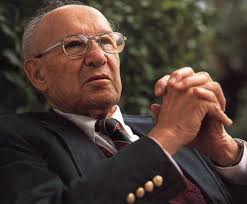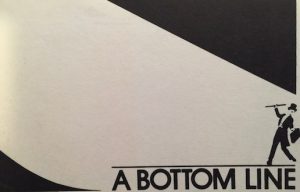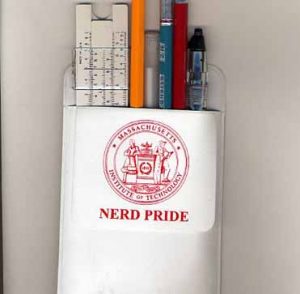 Last time, we looked at the limits of a rhetorical strategy (”connecting the dots”) as a tool for planning. There are too many dots forming too many possible pictures, yet we want to take advantage of what we know has gone before to set a way forward. There is a better way that resides in “solving for pattern” a phrase I first encountered in an essay by Wendell Berry.
Last time, we looked at the limits of a rhetorical strategy (”connecting the dots”) as a tool for planning. There are too many dots forming too many possible pictures, yet we want to take advantage of what we know has gone before to set a way forward. There is a better way that resides in “solving for pattern” a phrase I first encountered in an essay by Wendell Berry.
During my first weeks of business school, marketing mystified me. I had a decent background in accounting and project management; those classes I could make sense of. In marketing, I was lost during the discussion. When the professor laid out the analysis at the end I was no more enlightened than I had been eighty minutes earlier.
I concluded that the fatal flaw of the case method was its failure to provide neat pictures I could lay over the dots scattered throughout the case. Shortly before the midterm exam, a second-year student offered a review session with a roadmap for how to make sense of any marketing problem. I now had the picture that I could lay over the dots and connect them myself. The faculty was very distressed by this review session. We thought it was because their secrets had been revealed.
Perhaps.
I still made a mess of the midterm.
It was much later, after I worked as a case writer, when I began to grasp that the faculty was pursuing a deeper agenda. The case method is not about learning how to connect the dots; it’s about learning how to solve for pattern. That second-year student’s crib sheet was no help for dealing with a supply chain problem masquerading as a marketing problem.
Elements of Solving for Pattern
Organizations are stuffed with people ready to solve problems once they’ve been labeled. What is rare—and more valued—is the ability to frame and structure problems so that they can be solved. There are no simple pictures hiding in the environment waiting to be revealed and pointing to pre-determined responses. The proliferation of dots are signals in the environment worth attending to; ignoring them is not wise. If we’re not looking for dots to connect and trigger responses, what are we to do? Solving for pattern is a problem framing and response design process that better fits the world we occupy.
Wendell Berry introduced the term in an effort to contrast industrial farming strategies with family farming strategies. The strength of the strategies Berry advocated came not from swapping corporate managers for family ownership but from treating farms as complex systems rather than faux factories. As a trivial example, Berry points to replacing chemical fertilizers on crops with the manure produced by the milk cows feeding off those same crops. Connecting those two isolated systems into a larger dynamic system produces better outputs, reduces costs, and has other positive effects that ripple through other components of the overall farm system.
Much of solving for pattern is a change of perspective. It starts by viewing the current situation as a dynamic equilibrium producing outcomes that are a mix of desirable and undesirable results. The goal is not to fix a component in a bigger machine but to push the system into a new stable equilibrium with a better balance of desirable and undesirable outcomes.
This strategy of solving for pattern melds pattern recognition, systems thinking, design skill, and change management practices to effect these rebalancing efforts. Pattern recognition and systems thinking are the tools we need to understand where we are and the trajectory we are on. That understanding feeds into the design and change management efforts needed to envision and shift from the pattern we have to the pattern we want.
In his essay, Berry was exploring the complexities of managing the miniature ecosystem of a working farm. Whether you call them problems, opportunities, or messes, the situations that arise on farms —and organizations—never come with labels or instructions attached. Nor are they neatly isolated from whatever else may be going on. Tackling those situations effectively starts with choosing a better point of view.
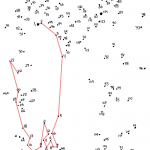 I was a big fan of Sherlock Holmes and various other fictional detectives growing up; I’m still drawn to the form when I want to relax. There’s a basic pleasure in trying to match wits with Sherlock and figure our who the killer is before the final reveal. Connecting the dots is a rewarding game but it’s a flawed strategy.
I was a big fan of Sherlock Holmes and various other fictional detectives growing up; I’m still drawn to the form when I want to relax. There’s a basic pleasure in trying to match wits with Sherlock and figure our who the killer is before the final reveal. Connecting the dots is a rewarding game but it’s a flawed strategy.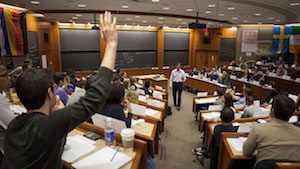 I’ve lost the certificate but I was once honored by my classmates for the “best bluff when called on unprepared” in a managerial decision analysis class during my first year in business school. I’m fuzzy about what had happened the night before as were most of my classmates so some celebration had taken precedence over opening the day’s case, much less actually reading it. Anyway, it’s now 8:30 and Professor F opens by saying “Mr. McGee, could you please take the role of John Smith for today.” Professor F then proceeded to name two other victims and paired each of us with classmates who were lawyers. We were dispatched to the hallway, while Professor F briefed the rest of the class on what what going to happen next. Out in the hall, I turned to my new partner, Jay, and asked him the key question on my mind. “Who is John Smith?” Jay’s response was “you’re the CEO of Acme—keep your mouth shut and don’t do or say anything unless I tell you to.” This was advice I was qualified to handle.
I’ve lost the certificate but I was once honored by my classmates for the “best bluff when called on unprepared” in a managerial decision analysis class during my first year in business school. I’m fuzzy about what had happened the night before as were most of my classmates so some celebration had taken precedence over opening the day’s case, much less actually reading it. Anyway, it’s now 8:30 and Professor F opens by saying “Mr. McGee, could you please take the role of John Smith for today.” Professor F then proceeded to name two other victims and paired each of us with classmates who were lawyers. We were dispatched to the hallway, while Professor F briefed the rest of the class on what what going to happen next. Out in the hall, I turned to my new partner, Jay, and asked him the key question on my mind. “Who is John Smith?” Jay’s response was “you’re the CEO of Acme—keep your mouth shut and don’t do or say anything unless I tell you to.” This was advice I was qualified to handle.


